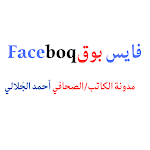Introduction
The
discovery of a lost book, known as the "Book of Enky," has sparked
intense debate among historians, scientists, and scholars around the world.
This ancient manuscript, purportedly dating back centuries, claims to contain
groundbreaking scientific knowledge that could revolutionize our understanding
of the world. However, skeptics argue that it could be an elaborate hoax
designed to deceive and manipulate. In this article, we will delve into the
mystery surrounding the Book of Enky, examining both its historical
significance and the skepticism that surrounds it.
Historical
Background
The
Book of Inky allegedly originated from an ancient civilization that predates
recorded history. According to proponents of its authenticity, the book
provides detailed accounts of advanced scientific principles, ranging from
astronomy and physics to medicine and engineering. Its pages are said to
contain intricate illustrations, complex mathematical formulas, and
descriptions of phenomena yet to be discovered by modern science.
The
book's existence was brought to light when a small, weathered manuscript was
discovered in a hidden chamber of an ancient temple. Scholars and historians
were initially intrigued by its enigmatic content, as it seemed to challenge
existing historical narratives and scientific understanding.
Scientific
Validity
The
authenticity of the Book of Inky has been a subject of intense scrutiny and
controversy. Some experts argue that the advanced scientific knowledge
contained within its pages aligns with modern theories, suggesting that it
could indeed be an ancient masterpiece predating our current understanding.
Supporters
of the book's legitimacy point to the accuracy of its astronomical
observations, descriptions of biological processes, and architectural designs
that exhibit an advanced understanding of engineering principles. They argue
that such knowledge could not have been known during the period in which the
book is purported to have been written.
However,
skeptics remain unconvinced, labeling the Book of Inky as a clever forgery or
an elaborate hoax. They question the lack of corroborating evidence, such as
additional artifacts or references to the book in other ancient texts.
Furthermore, they argue that the scientific knowledge it contains could have
been retroactively attributed to an ancient civilization to lend credibility to
the hoax.
The
Debate Continues
The
debate surrounding the Book of Enky highlights the inherent challenges in
verifying the authenticity of ancient manuscripts. Without sufficient evidence,
it becomes difficult to definitively establish its legitimacy or dismiss it as
a fabrication.
To
resolve this controversy, scholars and scientists have called for a
comprehensive analysis of the book's materials, ink, and writing style.
Advanced techniques such as carbon dating and ink analysis could provide
valuable insights into the book's age and origin.
In the
absence of concrete evidence, the Book of Enky has become a subject of
fascination and speculation. Its alleged scientific knowledge continues to
captivate the imagination of researchers and the general public alike, with
many hoping for a breakthrough that could reshape our understanding of ancient
civilizations and their contributions to science.
Conclusion
The
Lost Book of Enky remains a captivating enigma that has divided the scholarly
community. While some argue for its authenticity based on its advanced
scientific content, skeptics question its origins and demand more tangible
evidence. As the debate continues, the mystery surrounding the Book of Enky
serves as a reminder of the challenges faced in deciphering ancient texts and
verifying their historical and scientific significance. Whether it represents a
groundbreaking historical truth or the world's biggest bluff, the Book of Enky
keeps the allure of discovery alive, inspiring further exploration and
investigation.

